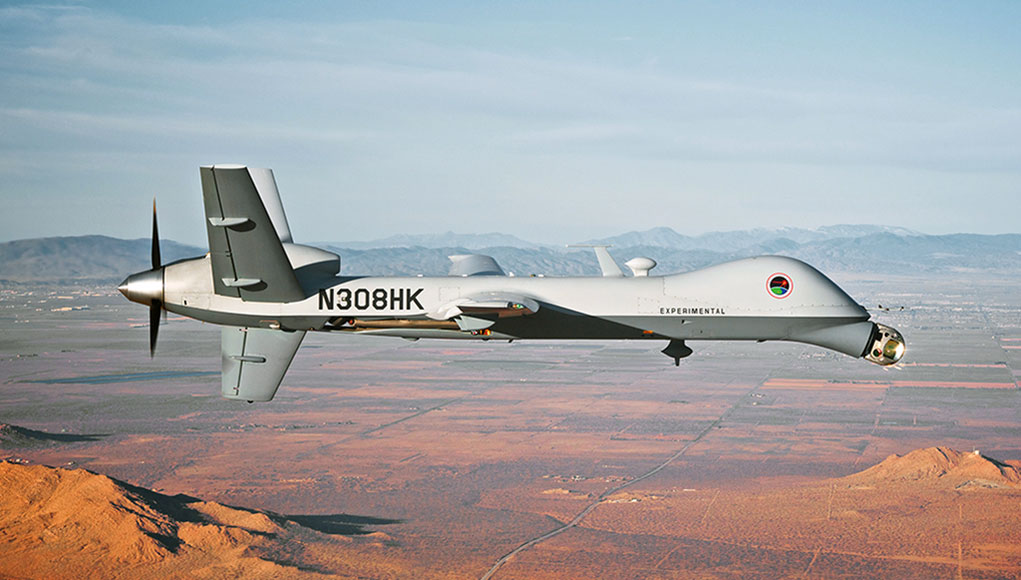With improved performance and matured sensors and payloads, Unmanned Aerial Systems (UAS) assume more missions, beyond the general intelligence, surveillance, reconnaissance (ISR) and attack roles they were used so far. Missile defense is one of the new applications explored for drones.
“A UAV-borne laser would be capable of acquiring, tracking and eventually destroying an enemy missile at a much lower cost than the existing BMDS.” Vice Admiral J.D. Syring, USN, Director, Missile Defense Agency said in his testimony before the House Armed Service Committee Subcommittee on Strategic Forces. “Beyond intercept, these UAVs will also support ascent and midcourse tracking and target discrimination, as an alternative targeting method to ground or ship-based radars, alongside space-based sensors.”
Remotely Piloted Aircraft (RPA) are already tested with Airborne Infrared (ABIR) sensors – performing forward picket to spot hostile missile launches and track them through their flight trajectory. In this role High-Altitude, Long Endurance (HALE) UAS can help defenders discriminate between warheads and decoys a few years from now, such platforms will also be able to intercept missile targets, zapping them on the ascent from hundreds of miles away using powerful lasers.
The U.S. Missile Defense Agency (MDA) already operates several General Atomics Aeronautical Systems Inc. (GA-ASI) Predator B (Reaper) RPA, equipped with the latest generation electro-optical Infrared turrets – the Raytheon Multispectral Targeting Systems-C (MTS-C) configured for ABIR missions. These drones have successfully performed missile tracks during the recent Pacific Dragon missile defense exercise held last June, off the coast Hawaii, at the Pacific Missile Range Facility in Kauai. Through the exercise, the drones conducted persistent monitoring of missile activity at the range. Overall, these sensors will ultimately improve the ability of missile defense sensors to track ‘cold body targets’ – the missiles flying in space, after rocket burnout. By tracking such targets through their time of flight, defenders could get better target discrimination, thus reducing reaction time, and increasing the probability of hit and reduce the overall cost per kill.




















